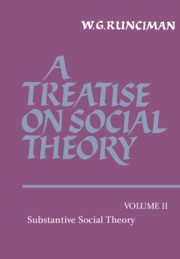1 - Introduction: societies as subjects for science
Published online by Cambridge University Press: 10 January 2011
Summary
WHAT ARE SOCIETIES MADE OF?
§1. Sociology begins at the point at which nature evolves into culture. It is true that there is no one such point, either historically or analytically. Historically, the emergence of Homo sapiens sapiens even from his immediate predecessors was a process which extended over many tens of thousands of years. Analytically, the conventional definitions of man as a social animal or a tool-making animal or even, perhaps, a speech-using animal have all been undermined by what is now known of the attributes and capacities of other species. But for the purpose of sociological theory, what matters is that the long millennia of biological evolution did in the end produce a species capable of the extra-organic transmission of progressively more complex patterns of information. It is a debatable question how far a better understanding (in the explanatory sense) of how this came about would carry over into a better understanding of the workings of the many thousands of societies which have evolved since the discovery of weapons, fire, art, clothing, houses, pottery, towns, agriculture, iron, the wheel and the written word. But what is incontestably necessary is an awareness of the degree to which, at each stage, the range of forms of social institutions has been widened.
- Type
- Chapter
- Information
- A Treatise on Social Theory , pp. 1 - 60Publisher: Cambridge University PressPrint publication year: 1989

